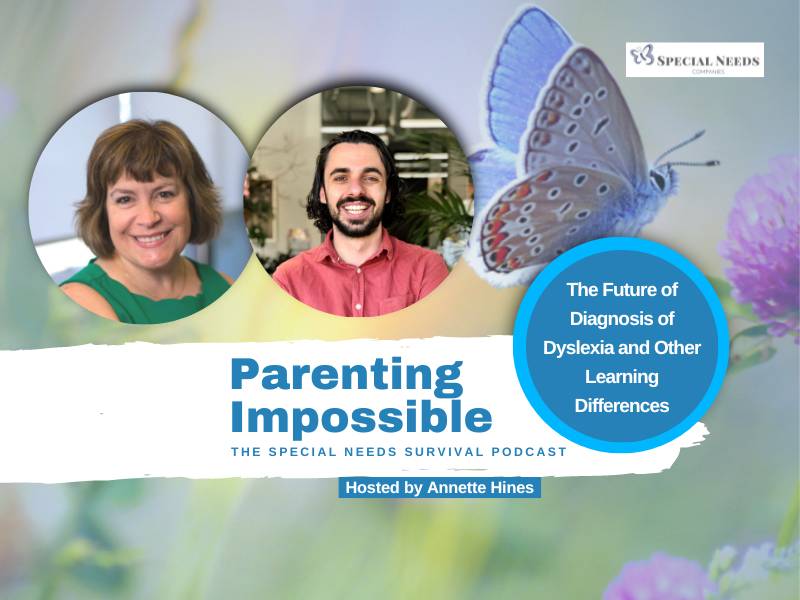Working at the intersection of artificial intelligence, ed tech, and dyslexia, Guest and Entrepreneur Hugo Richard of Dystech in Australia is driven to solve complex problems in our society. His goal is to create more awareness about how computer intelligence and artificial intelligence could enable the creation of reliable tools that will positively impact children worldwide and drastically improve and change how we do education. Learn with Host Annette Hines about how Richard and his team at Dystech are developing technology to empower educators to easily screen for dyslexia and assess reading performance. These innovations dramatically cut the time and cost for conducting reliable assessments for learning disabilities, which holds so much promise for our disabled student community.
Born and raised in France, Hugo Richard was not diagnosed with learning differences or the specific challenges with dyslexia and dysgraphia until later in life. Because traditional education was not working well for him, he actually started learning from YouTube videos and experimenting with computer science and artificial intelligence (AI) through various startup companies he created in France, the UK, and Australia. The first one he created in 2015, and since then he continued to explore the use of AI and various technologies. In 2018 he co-founded Dystech in Australia, where he now lives, to develop technology to empower educators to easily screen for dyslexia and assess reading performance.
Startlingly, dyslexia is very common and 1 in 10 individuals have this learning difference, which is a much higher rate compared to those with autism. Richard notes, however, that while people with autism have detectable differences, those who have learning differences experience the challenge of a hidden, intangible disability. Thus, the science and educational developments to create intervention plans for those with dyslexia and dysgraphia have lagged behind the innovations focused on autism. Richard explains we are all born to learn by experience, which is how children learn in preschool and Kindergarten. But when students transition to primary school, the medium of learning is reading and writing. If a person is dyslexic or dysgraphic, they might get left way behind because their ability to learn to read is quite different. His own challenges in primary and traditional education settings have fueled his desire to create the ability for diagnosing dyslexia with ai to make it easier to predict whether an individual has dyslexia and create learning intervention plans.
Through very detailed and down-to-earth descriptions, Richard explains how Dystech created a dyslexic screener that educators can use to complete an assessment in an average review time of six minutes with 91% accuracy for predicting a dyslexic reader. Computer science uses a rule-based approach for accomplishing tasks, and for a long time we’ve had no trouble programming a computer to complete tasks for which we have a step-by-step guide. But for those tasks for which no guide exists, we haven’t been able to tell the computer how to complete the task. But what scientists have been learning is that when you don’t know exactly the rules or guide for a task, the computer can figure out how to do the task when you provide it with enough data to isolate the characteristics of the thing you’re trying to accomplish. So, Richard’s Dystech team used the approach for isolating the characteristics of dyslexia based on the primary attribute of having trouble with reading. They collected thousands of reading recordings of diagnosed dyslexic readers and thousands of fluent readings, and they trained the computer model to pinpoint the qualities of the dyslexic readers. As the Dystech team collects more reading samples, the more accurate the model will become as it learns the variations for dyslexic readers.
Diagnosing dyslexia with ai uses six points in evaluating readers: 1. reading accuracy, 2. sight word fluency, 3. word reading fluency, 4. phonetical fluency, 5. syllabication, 6. reading reaction time or automaticity. It’s pretty amazing how much information the Dystech team can extract from the reading recording. The computer can automatically calculate to the nearest second these elements of assessment that a reading professional would need to calculate manually. The assessment can provide information needed to start a reading intervention.
The Dystech assessment tools for dyslexia save time both for sharing evaluation results with families and also the time for the actual assessment. To date, their assessment tool has saved over 200 hours of assessment time. In the Boston area, Hines notes that learning differences assessments can cost up to $5,000 or more, individuals have to wait six or more months to get an appointment for the evaluation, and it can take another month or two afterward to receive the report. Then if you need assistance in creating strategies or working with the school for a learning plan, it can cost even more money for families. Dystech’s assessment tool holds so much promise for our disabled student community by dramatically cutting the time and cost for conducting reliable assessments for learning disabilities as well as improving the method of education worldwide.
We’d love to know what you think of this episode! Leave a comment on our Podcasts page.

